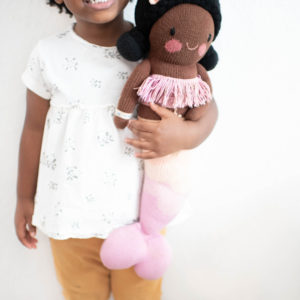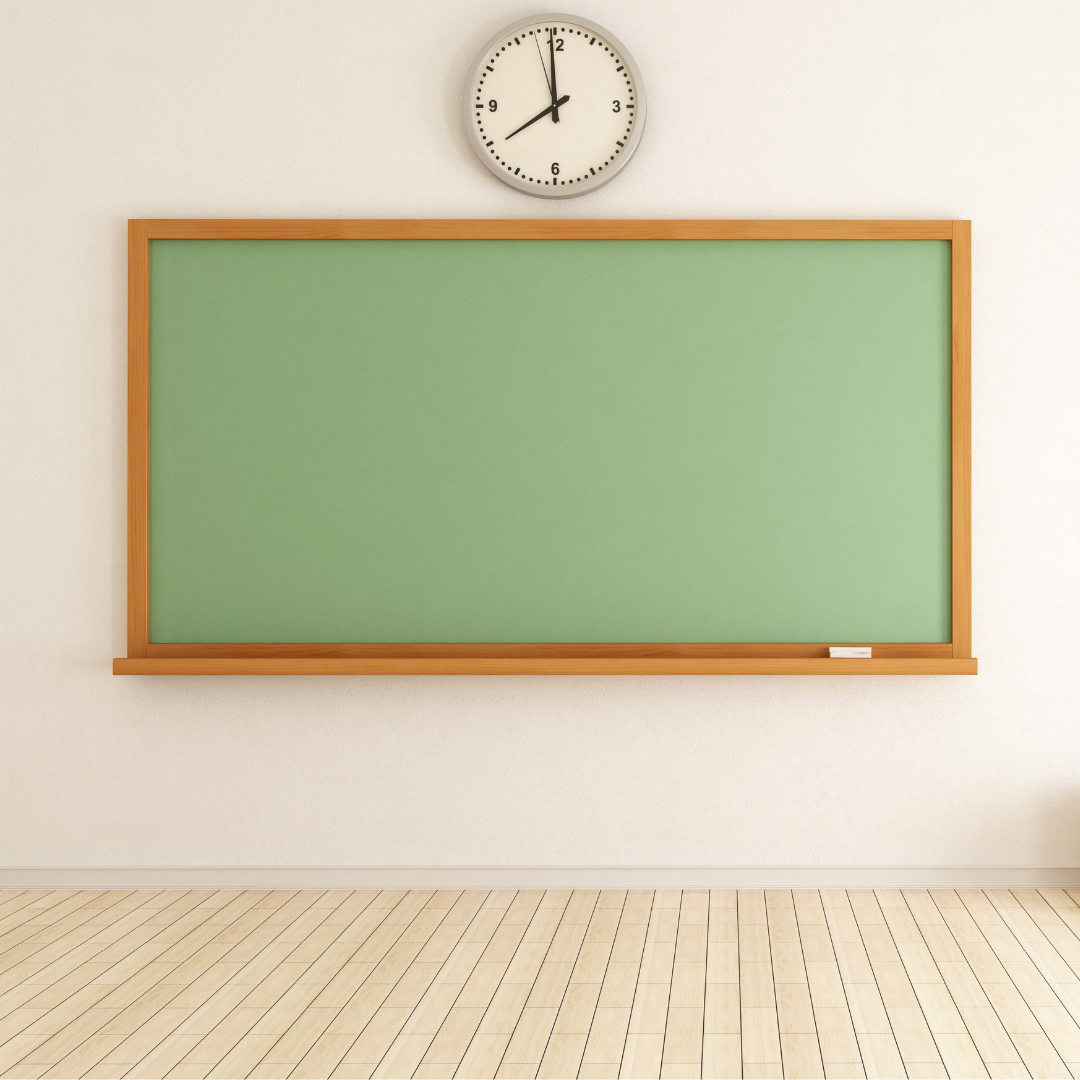At the beginning of the school year, my 5-year-old daughter seemed to have endless worries every night before bed. She had just started kindergarten, and it was her 3rd new school over the past few years. Every new situation that came up during the week, she expressed concerns. Separation from me all day was a concern. Uncertainty, in general, was a concern. After a period of a few months, the worries eased, the separation anxiety lessened, and nighttime fears seemed to go away. Childhood anxiety is real, but there are tools to help!
Then, over the holidays, we had a solid few weeks of almost constant worries about 1st grade. What would it be like? Would she know anyone? Who would her teacher be? What would the work be like? The list seemed to go on and on. And then, after we arrived home from traveling and caught up on some rest, the worries slowly disappeared.
Amid all of my daughter’s anxiety, though, I felt a burden. Naturally, I began to worry about my daughter’s worry! If any of you parents out there have had periods of significant anxiety yourselves, you will know that you want to spare your child from that pain. Anxiety can make you feel like you are suffocating, trapped, and unable to live your life. However, the thing that I have learned over the years in my own life and the lives of the children I work with is: anxiety is manageable. With the right tools and strategies, anxiety can go from constant shouting in your ear to a faint whisper every now and then.
Over the next month, we are going to discuss childhood anxiety, how it develops, and the best strategies to treat it. Today, I will start our series with a little Q&A session with general information about childhood anxiety, typical childhood fears, common symptoms, and when to seek treatment.

Do children have anxiety?
Yes, most definitely. Children are just miniature versions of ourselves. They have all of the same emotions we do as adults. They also have that mean bully in their brain that pops up from time to time, which we like to call anxiety. According to the CDC, 7.1% of children aged 3-17 have been diagnosed with an anxiety disorder. In addition, for children aged 3-17 years with behavior challenges, more than 1 in 3 also have anxiety. This means that our kids with ADHD and autism spectrum disorders are at an increased risk for developing anxiety. Only 60% of children with anxiety disorders ever receive treatment.
What is the difference between fear and anxiety?
Fear is the emotion that will first show up in our children. Fear is when we are faced with a threat to our safety. We identify the danger in front of us, and our body revs up to protect us with a shot of adrenaline to either fight the danger, run from the danger, or just freeze in sheer terror. On the other hand, anxiety is the emotion we feel when faced with PERCEIVED danger. This means that our body will react with that same intense fear response, even when there is no actual threat to our safety. Our brain assumes that the outcome of a future situation will result in danger.
What are common fears and worries in children?
Infants: Babies will show fears in response to:
- Being held by strangers
- Separation from their parents
- Loud noises
- Sudden movements
Toddlers/preschoolers: Normal fears and worries can continue, including:
- Separating from parents (should typically resolve around the end of kindergarten)
- Being alone
- New and unfamiliar situations
- Insects, dogs, and other animals
- Monsters
- Dark
- Heights
- Shots at the doctor
Elementary school: Anxiety may grow and change to include:
- Real-world dangers – storms, fires, earthquakes
- Family members getting sick, hurt, or dying
- Bad guys, burglars, or kidnappers
- Grades, test-taking, and going to school in general
- Ghosts and zombies
- Bad dreams
- Car accidents
- Spiders, snakes, animals
- Being teased or laughed at by peers
Middle and high school, common worries include:
- Friends and acceptance from friends
- Athletic performance
- Grades, test-taking, and going to school in general
- Crime
- World and health issues/catastrophic events
How do I know if my child has anxiety?
The symptoms of anxiety can be very tricky. This is because, most of the time, our kids don’t actually say what specifically is worrying them. They often have difficulty identifying the worry without an adult to ask the right questions. Most often, we can tell our kids are anxious when they start to ask a lot of questions entering new or unfamiliar situations, or they express a lot of “what if something bad happens” statements. Sometimes, our kids have difficulty verbalizing their emotions or thoughts at all. Instead, we can tell that they are anxious because they have frequent stomachaches with no apparent medical cause, headaches, fatigue, complaints of pain, restlessness, difficulty concentrating, irritability, anger, and trouble sleeping.
Now, remember above when I mentioned that when anxiety kicks in, our response is to fight, run, or freeze? I have seen a variety of kids who respond in each of those three ways, but the most common are fighting and running. Some of our kids cry, shake, say they are scared, and withdraw. As parents and teachers, we more easily identify these kids as anxious and often feel empathy toward them. However, other kids go into full-on “fight mode.” These kids hit, kick, throw things, and scream. As you can imagine, many school staff and parents mistake these kids for “behavior problems.” There is less empathy for the kids who fight in response to anxiety. Nonetheless, these children are often experiencing the same anxious and worried thoughts and feelings.
When should I be concerned about anxiety in my child?
The fears and worries in children listed above are common and typically not a significant concern. In many cases, your child’s anxiety might be easily soothed by talking through these worries, rationalizing them, and continuing as per usual. If your child is going through a new transition or life stressor, the concern might last a couple of months, but you should see a trend where it is becoming less noticeable. This was true with my daughter’s transition to school.
However, just because anxiety is common does not mean it should not be addressed or helped. For instance, many children will get strep throat, but we wouldn’t ignore those symptoms. We understand that it is a common illness in childhood, treatable, and we would assist. Anxiety is similar. Yes, it could go away on its own, but we need to start helping our children in a way that teaches them how to address worries in the future.
Anxiety becomes more of a concern when it is (a) a very intense emotion that goes off with no real or immediate danger, (b) it happens frequently, (c) it is very upsetting to your child and causes distress, and (d) it stops your child (or family) from doing fun and important things (like going to social events, leaving the house, attending school, or completing schoolwork). If you are starting to see these issues arise, it is time to seek out a professional to help you and your child learn to manage the anxiety.
What are some common anxiety disorders in children?
Below is a list of common anxiety disorders in children and signs to look out for:
- Generalized anxiety disorder
- Worry almost every day
- Worry about many different things (e.g., school, friends, illnesses, safety)
- Physical symptoms (e.g., headaches, stomach aches, pains)
- Difficulty controlling the worry
- Separation anxiety disorder
- Fear of sleeping alone/insistence on sleeping with parents
- Worry about being separated from a parent
- Worry about a parent getting ill, being harmed, or dying (possibly by an intruder)
- School refusal
- Refusal to attend sleepovers or other events without a parent
- Social anxiety disorder
- Worry about saying something embarrassing
- Worry about others laughing at you or teasing you
- Fear of getting called on in class
- Fear of giving presentations or performances at school
- Fear of attending social events
- Fear of becoming anxious in front of others and it is visible to others
- Selective mutism
- An extreme form of social anxiety
- Children are so afraid that they (physically) cannot talk in certain situations
- These same children may then be very talkative at home
- Specific phobia
- An intense or extreme fear of a very specific thing
- Extreme fears of animals, shots, blood, vomiting, storms, costumes, the dark
- For autistic children they might have highly specific and unusual fears, such as specific songs, specific noises, noise/sensory experiences in stores or restaurants, etc.
- Panic disorder
- Sudden, intense episodes of anxiety with no apparent cause
- Trembling, dizziness, numbness, shortness of breath
- Multiple episodes of panic
- Constant worries about the panic attacks occurring again
- Obsessive-compulsive disorder (OCD)
- Includes both obsessions and compulsions that get in the way of important activities
- Obsessions might include germs/illness, extreme fears of bad things happening, things needing to feel or look just right, disturbing and unwanted mental images or thoughts
- Compulsions might include excessive checking, washing, repetitive actions, ordering and arranging, praying, apologizing/confessing
- This can also be intrusive, ruminate thoughts that insight fear.
- Post-traumatic stress disorder (PTSD)
- Your child experienced or witnessed a traumatic (or perceived life-threatening) event
- Intrusive thoughts, memories, or nightmares about the trauma
- Avoiding thoughts or feelings connected to the trauma
- Negative thoughts about self, sense of blame, stuck in intense emotions, feeling detached or isolated from people
- Increased arousal symptoms: anger, difficulty sleeping, being easily startled, difficulty concentrating
If you are starting to see any of the above symptoms, your child’s emotions are very intense, and your child or family is living life around these symptoms, then it is time to seek professional help. In the coming weeks, we will be sharing more information on how you can help your child manage anxiety symptoms. So, if you haven’t already, make sure to sign up for our Relaxation Tools for Kids. By connecting with us, you will be the first to receive email updates on our weekly blog posts, as well as information on our upcoming course about parenting a child with ADHD. Let us know what questions you have for us.
Have a great week!
Lori

Resources we love:
“Freeing Your Child from Anxiety” by Dr. Tamar Chansky
“Help for Worried Kids: How Your Child Can Conquer Anxiety and Fear,” by Dr. Last.
“Helping Your Anxious Child: A Step-by-Step Guide For Parents” by Dr. Rapee
“What to Do When You Worry Too Much: A Kid’s Guide to Overcoming Anxiety” by Dr. Huebner
“Talking Back to OCD” by Dr. March






[…] If your child is experiencing anxiety that is to a level where it is negatively impacting their functioning at school, it is time to seek professional help. We would recommend scheduling an appointment with a child psychologist or licensed therapist/counselor who specializes in treating childhood anxiety. We recommend cognitive behavioral therapy (CBT) as this is an evidence-based treatment for treating anxiety in children. Click here to learn more about CBT and common childhood anxiety diagnoses/symptoms. […]